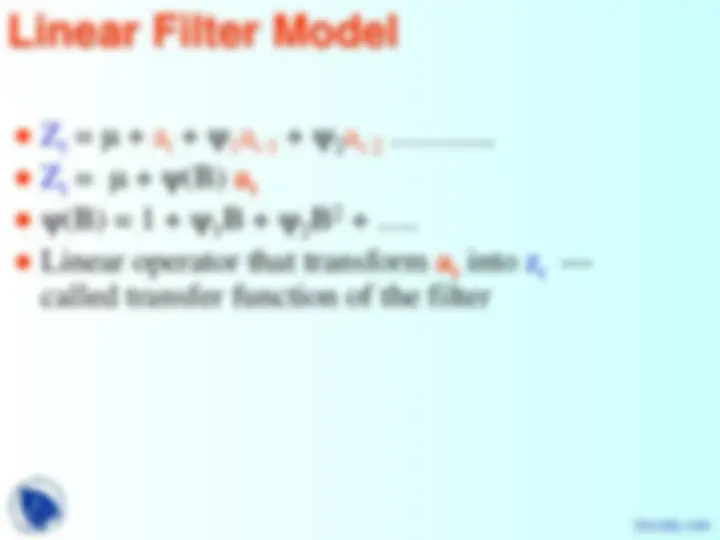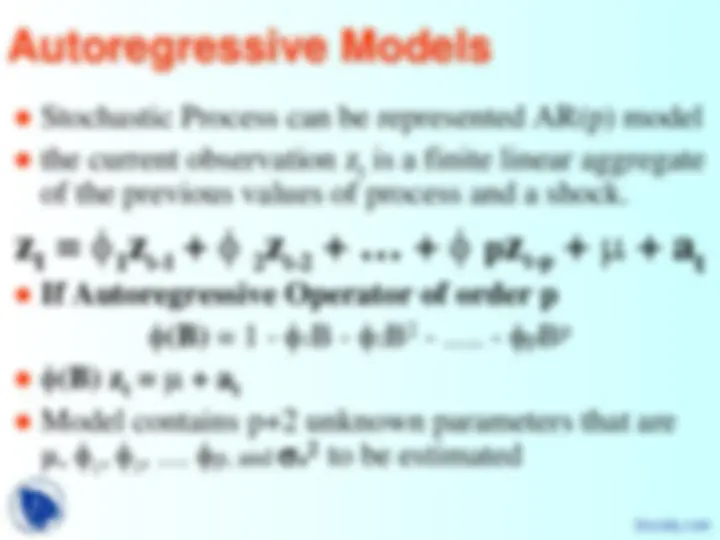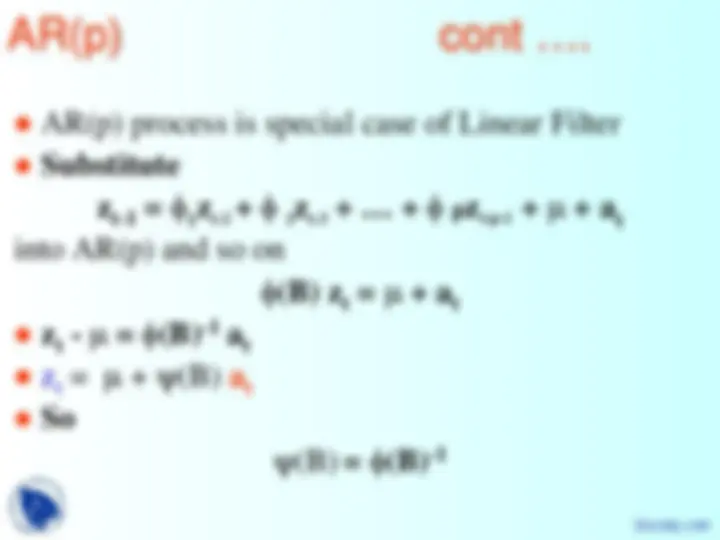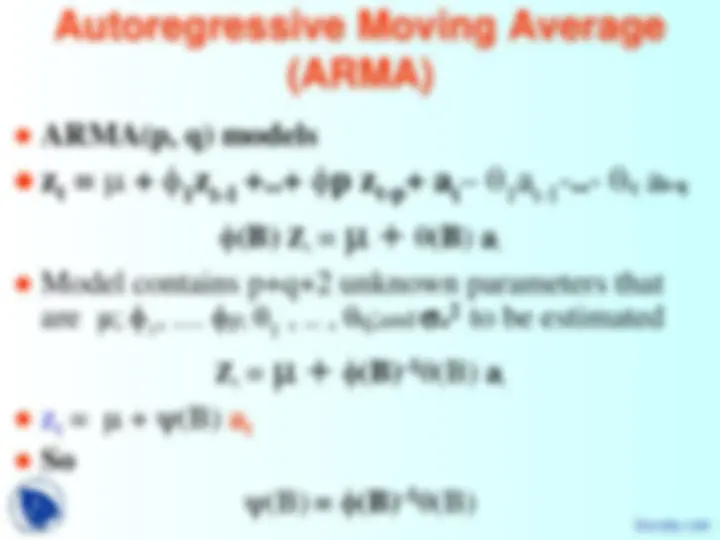







Study with the several resources on Docsity

Earn points by helping other students or get them with a premium plan


Prepare for your exams
Study with the several resources on Docsity

Earn points to download
Earn points by helping other students or get them with a premium plan
Community
Ask the community for help and clear up your study doubts
Discover the best universities in your country according to Docsity users
Free resources
Download our free guides on studying techniques, anxiety management strategies, and thesis advice from Docsity tutors
Linear Filter Model, Autoregressive Models, Moving Average Models, Autoregressive Moving Average, ARMA Filter, ARMA models, Parameters, Random disturbances, Substitute are points we learned in this lecture and you will find it interesting as well.
Typology: Slides
1 / 9

This page cannot be seen from the preview
Don't miss anything!






Time series in which successive values are highly dependent are regarded as generated from a series of independent shocks a (^) t. Shock are random, drawing from fixed distribution Normal, zero mean, variance σ a^2 the sequence of random variable at , a (^) t-1 , a (^) t-2 , …. is called white noise process
Linear Filter
White noise
a (^) t
Output z (^) t
ψ(B)
Stochastic Process can be represented AR(p) model the current observation zt is a finite linear aggregate of the previous values of process and a shock.
If Autoregressive Operator of order p φ (B) = 1 - φ1B - φ2B 2 - …. - φpB p φ (B) z (^) t = μ + a (^) t Model contains p+2 unknown parameters that are μ, φ 1 , φ 2 , … φp, and σ a^2 to be estimated
AR(p) process is special case of Linear Filter Substitute z (^) t-1 = φ 1 z (^) t-2 + φ (^) 2 z (^) t-3 + … + φ pz (^) t-p-1 + μ + a (^) t into AR(p) and so on φ (B) z (^) t = μ + a (^) t z (^) t - μ = φ (B)-1^ a (^) t z (^) t = μ + ψ(B) a (^) t So ψ(B) = φ (B)-
Model contains q+2 unknown parameters that are μ, θ 1 , θ 2 , … , θq and σ a^2 to be estimated z (^) t = μ + ψ(B) a (^) t So ψ(B) = θ(B)
ARMA(p, q) models
Model contains p+q+2 unknown parameters that are μ; φ 1 , … φp; θ 1 , .. , θq;and σ a^2 to be estimated
z (^) t = μ + ψ(B) a (^) t
So
ψ(B) = φ (B)-1 θ(B)